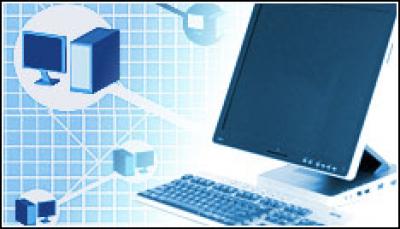With the distractions of the past year finally over, LANDesk Software is looking ahead to expand its desktop and security management offerings on top of its automation platform, according to CEO Steve Daly. The past year has been an uncertain one, with the company focusing on business as usual while awaiting a buyer.
LANDesk had been part of a data management company called Avocent when it was acquired by Emerson for $1.2 billion in October 2009. Emerson was not interested in keeping LANDesk, Daly said in an interview with eWEEK. In fact, Emerson listed LANDesk a “discontinued operation” in February and entertained bids from a number of buyers before closing the deal with investment firm Thoma Bravo for an undisclosed sum in August. The acquisition closed late September.
Move Towards Mobile Management
 Under the deal, LANDesk became an independent company with Daly, formerly the executive vice president and general manager, at the helm. Thoma Bravo saw a way to build a platform around LANDesk’s product and the private equity firm’s experience in security software and systems markets will help LANDesk build adjacent markets, such as mobile device management, he said.
Under the deal, LANDesk became an independent company with Daly, formerly the executive vice president and general manager, at the helm. Thoma Bravo saw a way to build a platform around LANDesk’s product and the private equity firm’s experience in security software and systems markets will help LANDesk build adjacent markets, such as mobile device management, he said.
LANDesk will “continue to invest and build synergy” in its line of desktop and security management products, said Daly. Underpinning the strategy is the management automation platform it unveiled in October, he said. Designed to enable organisations to easily define, design, implement and execute cross-platform IT automation tasks, IT managers will be able to automate business processes, Daly said.
As much as 30 percent of the IT department’s time is spent on redundant and repetitive tasks, he said, noting that many of them are poorly documented, if at all. These tasks are a “waste of time” for IT as the administrators can be working on more strategic initiatives or complex projects, he said.
The automation platform allows the community to share workflow processes, by using the process engine to create templates. The platform has four tool areas for content and resource, best practices, software development kit, and connections, allowing IT departments to automate and manage repetitive and manual processes, according to LANDesk. The platform also supports operating system migrations to Windows 7 and to perform software licence audits. By standardising operational processes, companies can also ensure they are compliant with regulatory requirements, as well.
The software asset management feature will be built into the platform, letting IT administrators to look at how many licenses were purchased, whether it was over-deployed, and whether there were users who had software they did not need them, said Daly. Companies can save money by reclaiming licenses this way.
LANDesk is also renewing its focus on the endpoint. By mid-2008, there were more laptops than desktops in the enterprise and, by mid-2011, the shift will be to smart devices like the iPad, according to Daly. “There has been an explosion in the number of endpoints that need to be managed,” he said
Managing Unsupported Devices
Another “huge problem” facing IT administrators is the number of unsupported devices in the enterprise, Daly said. The increasing number of operating systems also makes the user environment much more complex. An organisation may be running Microsoft Exchange for mail but the employees are reading their messages on an unsupported iOS device via ActiveSync.
“IT used to worry about Steve’s laptop. Now IT has to struggle with Steve’s user environment, such as the iPad, his iPhone or Android phone,” said Daly. IT departments have to shift from managing individual devices to managing the users.
With LANDesk Mobility Manager, IT administrators can get the “visibility as to what is out there,” he said. Seeing what they have in the environment was the first step for administrators to gain control. Future enhancements will be targeted towards the ability to secure, provision and control mobile devices, the company said. One such feature is the ability to perform remote wipes on mobile devices, according to Daly. If a user brings an unsupported device into the enterprise, the IT department will get the employee’s agreement that if the device is lost or stolen, then it can be remotely wiped for data security reasons, Daly said.
Originally part of Intel back in the 1990s, LANDesk was “the first company” with a desktop management suite, he said.
LANDesk competes against the likes of Novell with its ZENworks platform and Altiris in the the PC management space.




